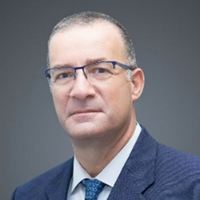
The Hebrew University of Jerusalem, Israel
Bio:
Professor Noam Shoval is a professor at the Department of Geography and holds the Kollek Chair for the Study of the Cultural Aspects of Vienna and Jerusalem. He currently serves as the Director of the European Forum at the Hebrew University and the Director of the Center for Urban Innovation at The Hebrew University of Jerusalem.
His research expertise is in urban geography and planning, urban tourism, and the development and implementation of advanced tracking technologies for use in urban studies, tourism, and medicine. As an internationally sought-after consultant, his work on tourist time-space activities, urban tourism planning, and aging has influenced policy and planning in Spain, Hong Kong (SAR of China), Israel, Germany, Denmark, Italy, Australia, and Mainland China.
He completed his Ph.D. at The Hebrew University, conducted post-doctoral research at the University of London (2000–2001), and was an Alexander von Humboldt Research Fellow at the University of Heidelberg (2007-2008). He has also held visiting professor positions at the Center for Urban and Social Research at the University of Pittsburgh (2014-2015) and the School of Hotel and Tourism at the Polytechnic University of Hong Kong (2022).
Throughout his career, he has served in numerous leadership positions, including Chair of the Department of Geography (2009-2013), President of the Israeli Geographical Association (2015-2017), and Provost of the Rothberg International School (2017-2022). The author of five books and over one hundred and forty scientific publications, he was elected a fellow of the International Academy for the Study of Tourism in 2017. He is also the recipient of the Belt and Road Prize from the Polytechnic University of Hong Kong (2019) and the Roy Wolfe Award from the American Association of Geographers (2022).
Talk Title:
Multi Sensor Tracking for Understanding Human Behavior
Abstract:
Understanding time-space activities of people has always been of importance for geographers. transportation researchers and urban planners. The biggest challenge for understanding the consumer and their activities and experiences is the availability of objective high-resolution data. Relatively recent technological advancements, most notably the proliferation of tracking technologies (GPS), real-time surveying techniques using smartphones, and ambulatory sensing, have allowed researchers and professionals to advance the empirical investigation of time-space and recently also the interaction with emotions.
It is suggested that we have witnessed three distinct phases of the advancement of research in this domain:
Tracking 1.0: The introduction about 15 years ago of tracking technologies such as GPS to understand the time space activities was groundbreaking. The ability to collect high resolution data in time and space and led to the implementation of this groundbreaking methodology in various fields such as geography, medical and urban research.
Tracking 2.0: About a decade latter another breakthrough took place - real-time surveying techniques using smartphones, social media, and ambulatory sensing - have allowed researchers to advance the empirical investigation of the interaction between space and emotion. More specifically, for the first time, combined measurements of objective emotion (Arousal) via Electric Dermal Activity (EDA) were implemented.
Tracking 3.0: We are on the verge of a third breakthrough. The ongoing miniaturization of advanced technological tools is allowing for novel approaches for studying human activity in time and space. Until recently, gauging what consumers looked at and found interesting in the urban environment has been done in a subjective manner through surveys, interviews, and self-reports. Today, we can use mobile, medical grade physiological sensors in the field, to objectively discern what arouses consumers’ interests by measuring GSR, PPG, and eye movements in real time and in situ while moving in time and space.
We now have a tool to make experiments, to identify dynamic responses to different contextual situations such as amount of crowding at the site, light intensity, atmospheric ambience, etc. This might be a new dynamic approach to study how human interact with other people, the built environment or open spaces, indoor attractions like museums, themed attractions and other man-made entertainment and commercial venues. This presentation will present the three distinct phases of research in the realm on tracking using empirical case studies with a specific focus on Tracking 3.0.
©2025 GeoHB All Rights Reserved.


 loading......
loading......